Have you ever looked at a task, such as “write a personal narrative” and wondered “Ok, but how do I teach students to do that?”? You don’t say this out loud, of course. You’re a teacher! You’re supposed to know this stuff, right? Insert backward design! Today, I’m sharing how to use backward design in planning for student success. We’re going to take large assessment tasks, such as a writing task like narrative writing, and use the backward design method to plan an awesome learning experience for students.
Are you a Quebec elementary ELA teacher? Be sure to download my free QEP Competencies Handbook. It provides an easy-to-use format so you know EXACTLY what you have to teach your students.
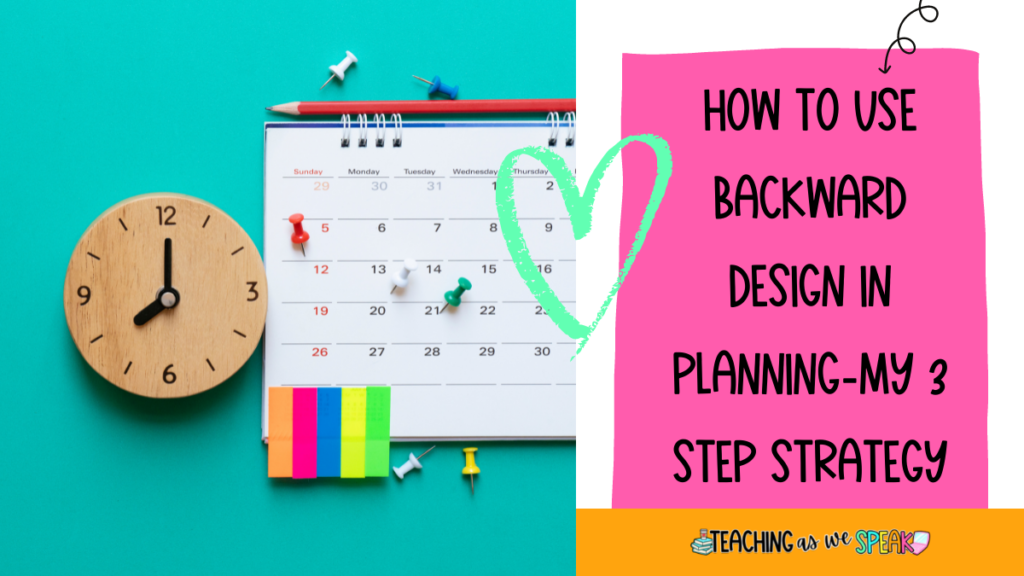
What is Backward Planning?
I remember starting out as a young, new teacher. I knew that I had to teach students to be able to write large pieces such as information-based texts. Of course, I knew I had to teach my students to summarize a story. I knew I had to teach them how to contribute to small-group discussions. I KNEW I had to do these things. Then, when I’d sit down to actually plan my teaching unit, I would stare at my blank planner for a long time.
But HOW do I teach them to do this?
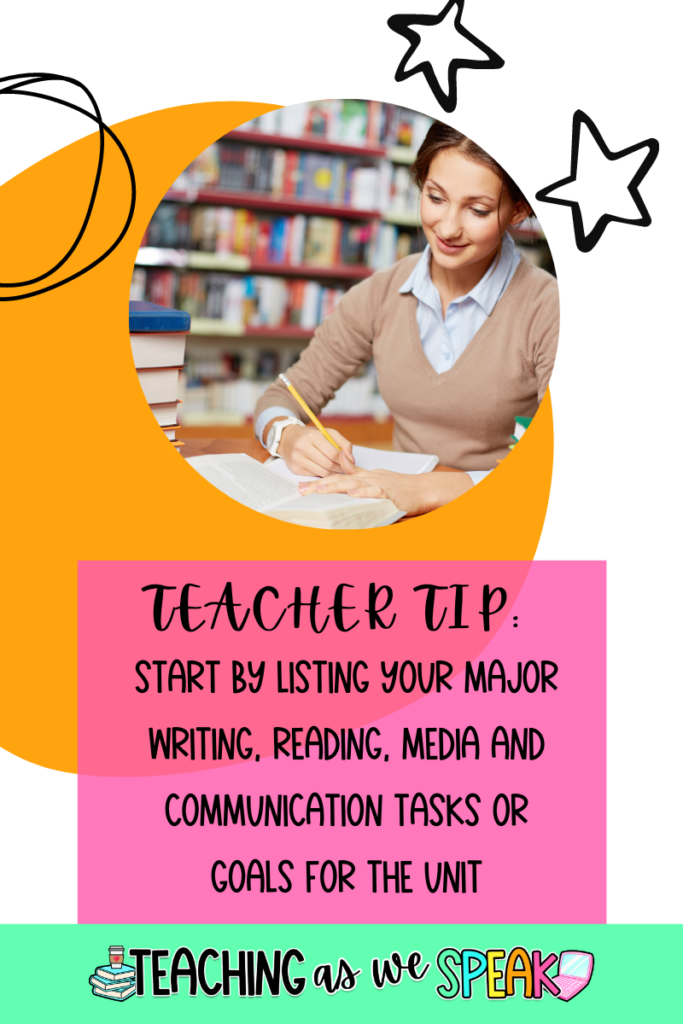
Backward planning or backward design is literally what it sounds like. It is taking a large assessment task or skill you have to teach, and working your way backwards. It’s basically breaking down a large task into bite-size pieces which will become your lessons.
What Are The Three Stages of Backward Design in Instructional Planning?
I’m going to share the 3 steps with you, then I will break each step down so you know EXACTLY what you know exactly how to use backward design in planning your teaching units.
1-Identify your desired/final result
2-Determine skills required to achieve the result and create your assessment tool
3-Plan your instruction for each of these skills
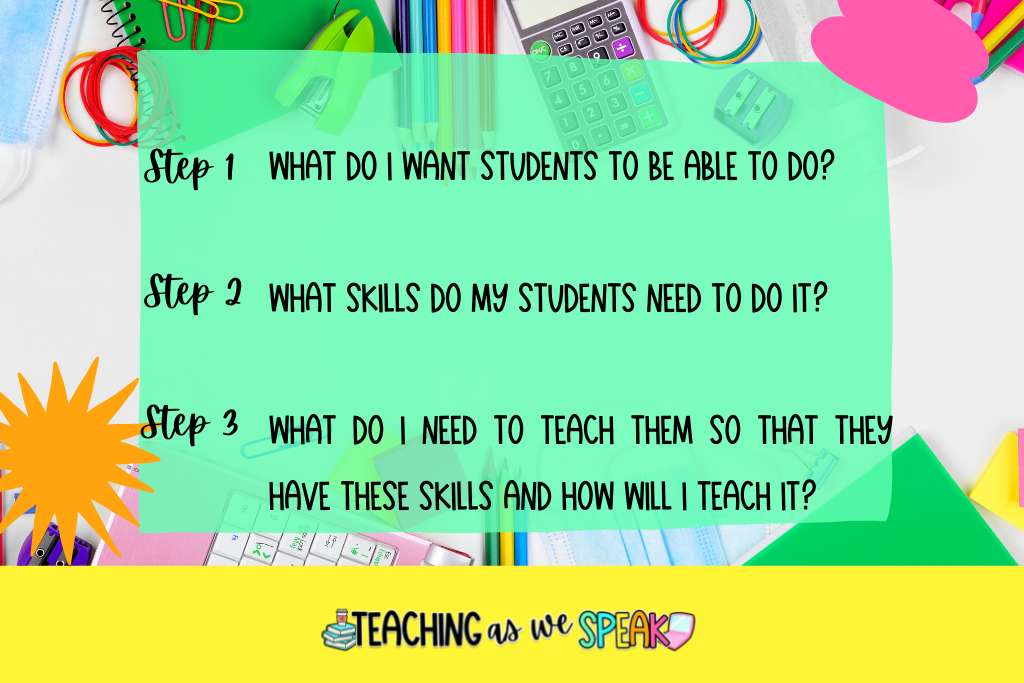
Remember that all three steps must be done in this exact order in order to use backward design effectively.
Click here to download my free QEP Competencies Handbook in order to see which skills must be taught within the Quebec Education Program for Cycles 1-3 in elementary English Language Arts.
Step 1-Identify Your Desired/Final Result or Culminating Task
First, you need to identify your desired or final result. This is often called the “culminating task”. The final result is often performed, created or done at the end of a unit.
Some types of culminating tasks include a final writing piece, a presentation, a test or a final reflection. Click here to read my recent blog post about the different types of assessments.
Here is a list of examples of culminating tasks:
-A persuasive essay
-A book report (make sure you specify whether this task would be to assess students’ reading skills, writing skills, presentation skills, etc…)
-A debate speech
-A personal narrative
See the image below for more examples!
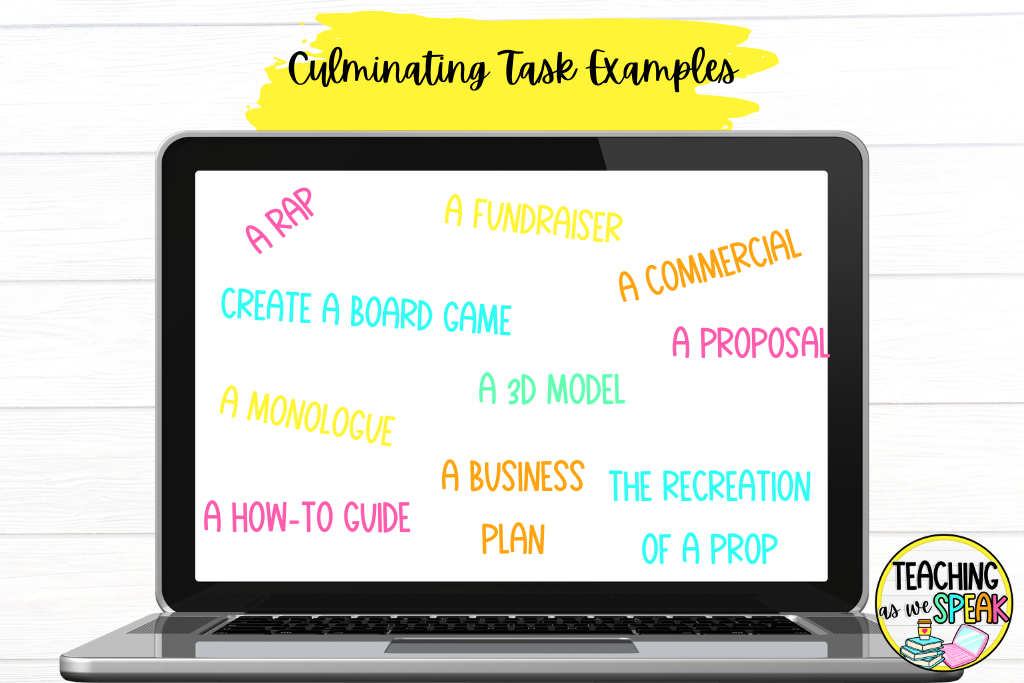
Step 2- Determine Skills Required to Achieve the Result and Create your Assessment Tool
Once you have chosen your final/culminating task, it’s time to break this task down. Some questions to ask yourself in this step are:
- How will you know your students have done this task?
- What will I be looking for when assessing the students’ work?
- What is most important in order to accomplish the skill?
- You must break this large task into as many small pieces as possible.
The image below provides an example of a personal narrative broken down.
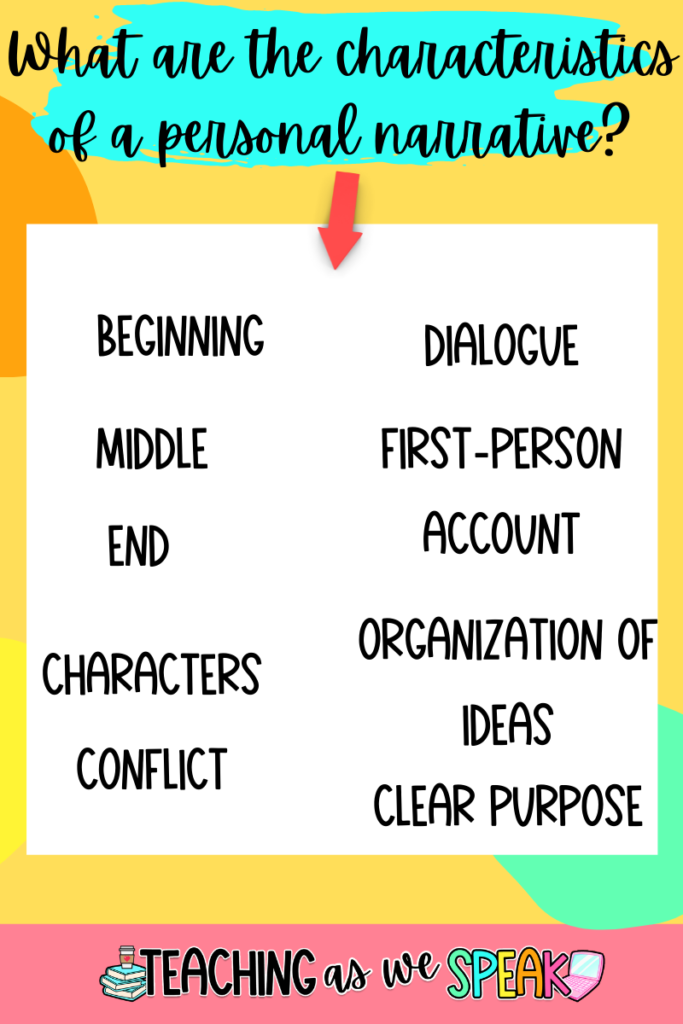
Once you have done this, you can begin to create a rubric, with each portion of the rubric including these skills you have listed as important to assess the students’ competence.
For example, if you are going to have students write a letter to the principal to try and persuade him/her to hold an assembly for Earth Day, some of the skills that students will need are to:
- Format the letter properly (address, postage stamp, addressing the letter to the person, signing the letter at the end, etc…)
- Aacknowledge the goal/purpose for writing the letter
- List the reasons why he/she should hold the assembly (what’s in it for them)
- Describe what will happen if he/she doesn’t hold the assembly
- Use selective word choice (persuasive words are included)
- be grammatically correct (spelling and punctuation errors)
If I was creating a rubric for a task like the one listed above, my assessment rubric would include FORMAT, REASONS, STRUCTURE, GRAMMAR, SPELLING and WORD CHOICE. Now, depending on your grade level, a rubric with 6 criteria may be too much. In that case, you would prioritize what’s MOST important.
Step 3-Plan your Instruction for Each of These Skills
Once you identified all the steps to completing the final task, each step can now be turned into individual lessons.
In the example used above, you could plan a lesson in the format of a letter. Then, you could teach students about how to identify your audience. Etc…
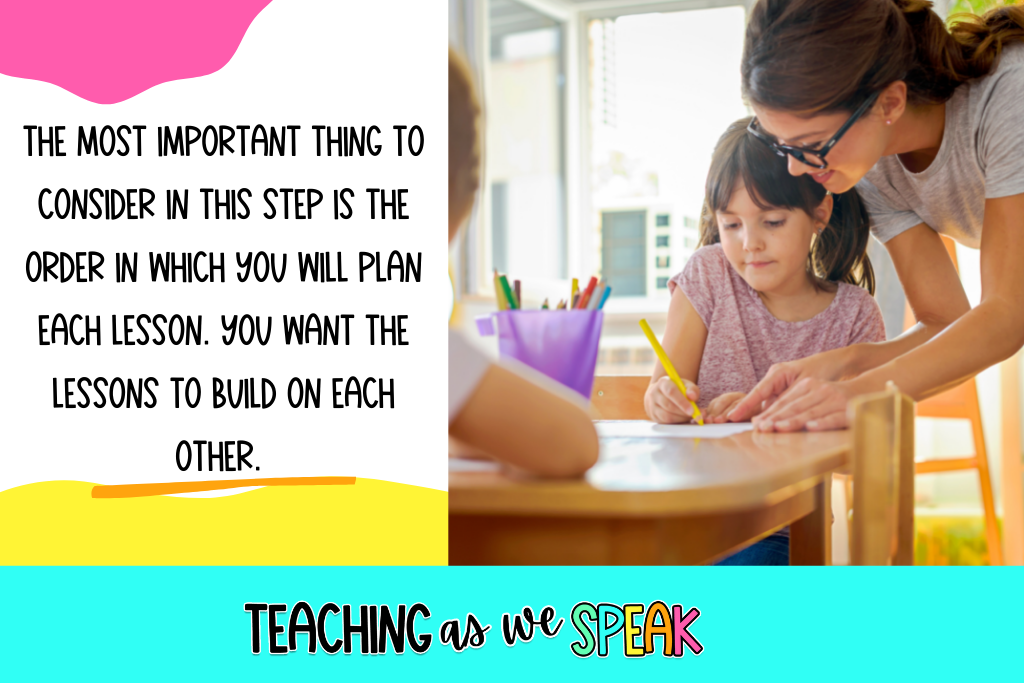
The most important thing to consider in this step is the order in which you will plan each lesson. You want the lessons to build on each other. Also, you want to have resources that will be used or created in each lesson, but that students can use later when they create the final task. Some examples include anchor charts to display in the classroom, graphic organizers that students can keep in their notebooks and worksheets.
Final Thoughts on How to Use Backward Design in Planning…
I hope this post was helpful in showing you how to use backward design in planning your lessons and assessments. Do you use backward design in your planning? Or is this a new concept to you? Comment down below!
Don’t forget to grab the free QEP Competencies Handbook by clicking here!




